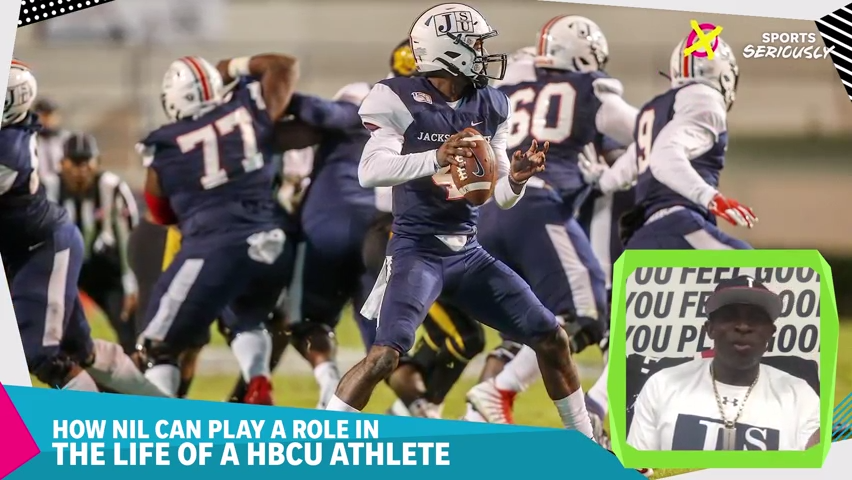'Wild, wild west:' College athletes cashing in with little oversight of name, image and likeness deals

In the first three months of the name, image and likeness era, millions of dollars in sponsorships and promotional payments have flowed directly into the pockets of college athletes – often in creative ways.
Arby's is offering Division I running backs $500 for a single tweet. A Michigan-based mortgage company is giving $6,000 per year to every football and men's basketball athlete at Michigan State, in exchange for advertising. And protein bar company Built Brands is effectively covering the cost of attendance for BYU walk-on football players.
"NIL, when it came out and in the last several weeks, it’s a little bit of the wild, wild west, right?" Built Brands co-founder Nick Greer told local reporters in August.
And there doesn't seem to be a sheriff in sight.
As the NIL industry continues to shift and evolve, it remains unclear whether any entity is scrutinizing the contents of deals, or is prepared to enforce any violations of the few rules that are in place to govern them.
Individual schools have been left to dictate their NIL policies, guided by state law. Conferences have been wary to intervene, in part due to differences in those laws. The NCAA has adopted a bare-bones interim policy. And it is unclear if or when Congress will pass some sort of federal law.
The result is a nascent industry with lots of money, lots of creativity and few guardrails.
"Given that the rules are fairly vague and inconsistent, it’s difficult to figure out when someone is operating under the rules and when they’re not," said Gabe Feldman, the director of the Tulane Sports Law Program. "I think that’s a recipe for more creative deals and just a lot more activity in the market.”
BIG BUCKS: Boosters, businesses getting bolder in deals with college athletes
NCAA president Mark Emmert has urged Congress to implement a federal framework for NIL, and he continued that quest at a House subcommittee hearing last week.
He told members of Congress that 35 states have passed or introduced legislation, or issued executive orders, regarding NIL as of last week. But the provisions of those laws vary, which has resulted in a hodgepodge of rules across the country.
"We need clarity," Emmert told Paste BN Sports in a brief interview after the hearing. "We need the kind of clarity that only Congress can give us."
Feldman said there appear to be two entities that could crack down on phony NIL deals: States that have an applicable law on the books, or the NCAA.
He warned that even if a "pay-for-play" deal is masquerading as an NIL contract, in violation of some states' laws, the state might not have the resources or the incentive to investigate.
The NCAA, meanwhile, could continue to investigate such deals under its current enforcement structure – not because they violate any NIL guidelines, but because they run afoul of the organization's broader amateurism rules. But after its unanimous loss atc the Supreme Court in NCAA v. Alston, which centered around athlete compensation, Feldman thinks the organization "is wary of exercising too much authority" on the issue.
Jim Cavale, the founder of an NIL platform called INFLCR, Inc., said in a panel discussion earlier this month that potential regulators like the NCAA and Congress might be waiting to see how the landscape shapes up before laying down more formal rules and enforcing them.
"I think people want to see how the behaviors and the data tell the story of what the national uniform regulations really need to be," he said.
"It's kind of like the wild west will show a lot of things. You'll see people do great things with this and there are a lot of great stories. But you will also see people manipulate this system for recruiting purposes."
One of the key issues with regulating NIL, at this juncture, is that each school and state is serving as its own individual marketplace.
There is no uniform policy that stretches from Alabama to Florida to Texas – and no oversight of the deals, to ensure their legitimacy. If a Texas-based company wanted to pay every Texas A&M football player a stipend of $2,000 per month for advertising on social media, for example, there would be little to stop an Alabama-based company from turning around and offering Crimson Tide football players double that amount for the same work.
"We just don't have very clear parameters, and so we don't really know what is and isn't allowed – and it's different and inconsistent between states," Baylor president Linda Livingstone told Paste BN Sports. "The more we can get consistency in that landscape, the easier it will be for schools and individuals to navigate that."
Feldman said he can see a world in which NIL deals are examined in the same way the NCAA considers off-campus jobs. A booster is allowed to employ an athlete as long as that athlete is paid for work actually performed, at the going market rate.
But until the market settles, and that rate is established, the situation remains murky.
"There is still risk to the institution, there is still risk to the athletes, if the deal is so obviously not a name, image and likeness deal," Feldman said. "Now where is that line? I have no idea. I don’t think anybody has an idea."
Contributing: Steve Berkowitz
Contact Tom Schad at tschad@usatoday.com or on Twitter @Tom_Schad.